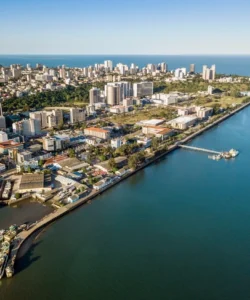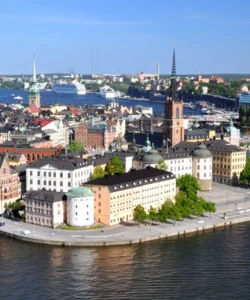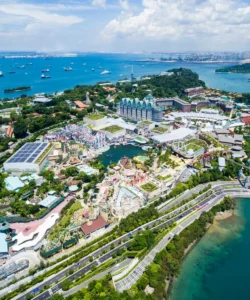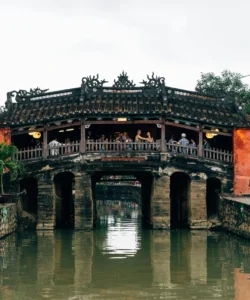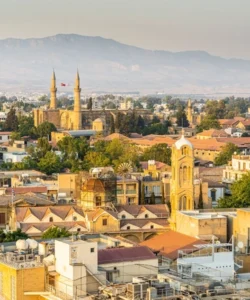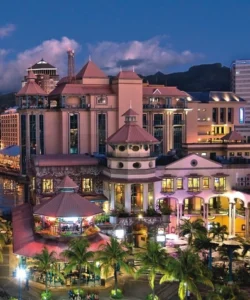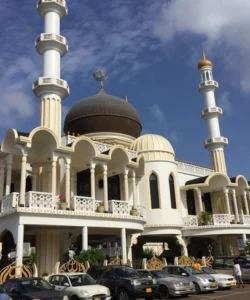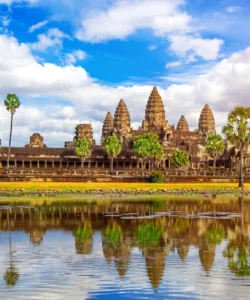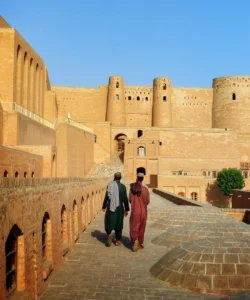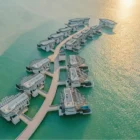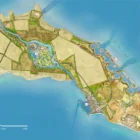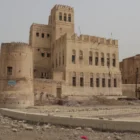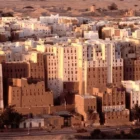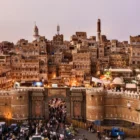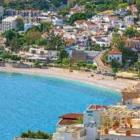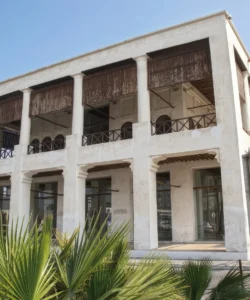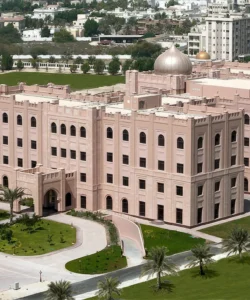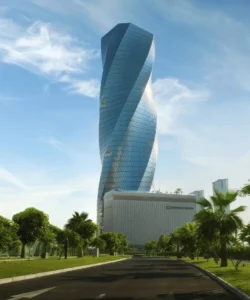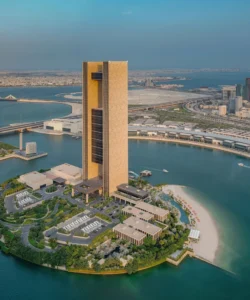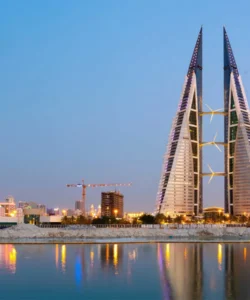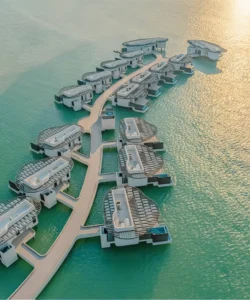The Hawar Islands are a stunning archipelago of desert islands located off the west coast of Qatar in the Gulf of Bahrain, though primarily owned by Bahrain. Renowned for their relatively pristine condition and rich biodiversity, these islands are a haven for wildlife enthusiasts and a unique eco-tourism destination.
Listen to an introduction about Hawar Islands
Name and Address
- Name: Hawar Islands (Arabic: جزر حوار; Juzur Ḥawār)
- Address: Southern Governorate, Bahrain.
- Location: Situated in the Gulf of Bahrain, approximately 19 km (12 miles) southeast of Bahrain Island and very close to the Qatari mainland (about 1.9 km or 1 nautical mile).
How to Get There
Access to the Hawar Islands is somewhat restricted to preserve their natural state, but visitors can reach the main island.
- By Boat/Ferry: The most common way to reach Hawar Island (the largest and only inhabited island with a hotel) is by boat from Durrat Al Bahrain (or sometimes Duraz Port) on the Bahrain mainland. The ferry journey typically takes around 25-45 minutes.
- Organized Tours: Many visitors opt for organized tours that include boat transfers and activities on the island.
- Visitor Access: Access to most of the smaller islands in the archipelago is severely restricted by the coast guard and military to protect the fragile ecosystems. However, the main Hawar Island, particularly around the resort area, is open to the public.
Landscape and Features
The Hawar Islands offer a unique desert island landscape characterized by shallow seas, extensive seagrass beds, and rugged terrain.
- Archipelago: The group consists of 16 officially recognized islands, though there are over 30 smaller islets, many of which are little more than sand or shingle accumulations.
- Shallow Waters and Seagrass Beds: The islands are surrounded by shallow, calm waters with extensive seagrass beds and vibrant coral reefs, creating a rich marine environment.
- Desert Landscape: The islands themselves are primarily desert, with rocky terrain, sand, and shingle accumulations. Hawar Island, the largest, is 18 km long and features a continuous beach ridge complex on its west coast.
- Wildlife Haven: The islands are a designated Ramsar Wetland of International Importance (since 1997) and an Important Bird Area by BirdLife International due to their significant wildlife populations.
- Birds: They host one of the world’s largest breeding concentrations of the Socotra Cormorant (200,000–300,000 adults recorded in 1992), along with significant numbers of Greater Flamingo, Black-headed Gull, western reef egrets, ospreys, and various migratory birds.
- Marine Life: The surrounding waters are home to endangered dugongs (sea cows), several species of marine turtles (including green sea turtles), and dolphins.
- Land Animals: Arabian oryx and sand gazelles roam the main island.
- Limited Development: Development is minimal, primarily concentrated around the Hawar Resort by Mantis on the main island, which focuses on eco-friendly amenities.
What Makes It Famous
The Hawar Islands’ fame is primarily tied to their ecological significance and untouched natural beauty:
- UNESCO World Heritage Site (Nominated/Recognized for ecological significance): While the full UNESCO World Heritage Site status has been a point of discussion and nomination, the islands are globally recognized for their ecological importance and pristine environment.
- Biodiversity Hotspot: They are renowned as one of the most important wildlife preserves in the Middle East, particularly for their large populations of Socotra Cormorants and dugongs.
- Eco-Tourism Destination: The focus on preserving nature and offering eco-friendly experiences makes them a unique destination for nature lovers, birdwatchers, and those seeking tranquility away from urban development.
- Pristine Beaches and Clear Waters: The untouched beaches with soft, white sands and crystal-clear turquoise waters are highly appealing for relaxation, swimming, snorkeling, and diving.
- Disputed Territory: Historically, the islands were part of a territorial dispute between Bahrain and Qatar, which was resolved in 2001 by the International Court of Justice, affirming Bahrain’s ownership.
Differences from Some Other Landmarks
The Hawar Islands stand in stark contrast to many other landmarks in Bahrain and the region:
- Natural Wilderness vs. Urban/Historical Structures: Unlike the man-made architectural marvels (like Al Hamra Tower), historical forts (like Bahrain Fort), or bustling cultural hubs (like Bab Al Bahrain), the Hawar Islands’ primary appeal lies in their natural, largely untouched wilderness. They offer a raw, ecological experience rather than a historical or urban one.
- Focus on Wildlife and Conservation: While other attractions might have some natural elements (like Al Mutlaa Ridge’s desert landscape), the Hawar Islands are fundamentally a wildlife sanctuary and a site of international ecological importance, with strict access restrictions to protect their unique flora and fauna.
- Remote and Tranquil: Compared to the easily accessible and often crowded urban landmarks, the Hawar Islands provide a sense of seclusion and tranquility, requiring a boat journey and offering minimal infrastructure beyond the resort on the main island.
- Marine Ecosystem Emphasis: While coastal areas in Bahrain exist, the Hawar Islands’ fame is intrinsically linked to their extensive and protected marine ecosystems, including vital seagrass beds and coral reefs, which support endangered species like dugongs.
Hawar Islands Photos:


































